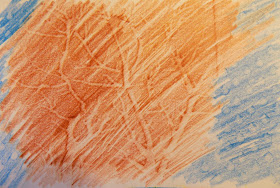On Fridays after a long week I like to do one of two things to relax and put a buffer between work and home. I either go driving around the pretty areas and take photos. It relaxes me to view prettiness, animals, clouds, and general green beauty.
I also love to 'play' with the photos when I get home. This means processing, cropping, adding filters, adding quotes or verses, etc.
In the second case, I like to stop in to either the second hand shop, or the vintage shop in town and see what they have for collectibles. The ladies at the 2nd hand store buy from auctions, and the ladies from the vintage shop buy from estate sales. The inventory at both shops rotates frequently and there are always some great finds or good bargains to be had.
I am currently collecting teacups and teapots. Given that I have a microscopic kitchen, this fever to collect tea paraphernalia cannot go too far! But I love to drink tea and I love beautiful things. The magazine Tea Time inspires me to try fancy recipes, and their table settings are always gorgeous. My mother had a wonderful eye for pretty things and she taught me well. Her table was always creative and beautiful.
I mean, come on, who wouldn't love this?
Yesterday even though it was gorgeous outside again, I decided not to go for a drive but instead go to the vintage shop. It had been many months since I was there. I had seen on their Facebook page that they had gotten a new Tea Service in, and I wanted to take a closer look. When I got there of course there were many beautiful things to look at, including some new art and a sea foam green couch that was in perfect condition for its age.
I looked at the tea set but it was Lefton, which I was not interested in. I did see some Royal Doulton espresso cups, which took me back. Not the espresso, but the pattern was my mother's china, and boy oh boy, did she have good taste. She got married in the 1950s and presumably that was when she got her Royal Doulton china. The pattern definitely stands up to age. It is still classic and beautiful.
I looked carefully around and spotted three other things which I did buy.
Noritake Glenrose pattern china cup and dish (not saucer).
Noritake Glenrose was produced between 1951-1957, which makes it mid-century and vintage. Noritake was a china company founded in 1905 in the Japanese village of Noritake. The company began exporting to the West in 1914. Noritake is good china and much of it is pretty, but if you're collecting the most prestigious, it would be better to look for Royal Doulton, Meissen, Wedgewood, or Portmerion.
Glenrose is a pretty pattern, though not especially collectible since it was very common. I am not interested in re-selling but only collecting if it appeals to my aesthetic taste. Glenrose definitely does, and it was priced well, so I bought it.
Another interesting find I discovered Friday was the cup to match a Kutani teapot I'd bought months ago at the same store.
This Japanese Kutani crackle porcelain teapot has all-over crazing under the clear glaze for a crackle design. The transfer design is an iris and bird motif with gold leaf on both sides and on the lid, with a bamboo or rattan handle. The color is an ivory or cream color. Kutani porcelains are characterized by their elaborate picture decorations in thick gold, red, blue and some other colors. In latter years I understand that these decorations were no longer hand painted but usually transferred by decal.
This teapot and now my new-to-me cup are not vintage but are extremely functional. The pot is the perfect size for three or four cups, it keeps the tea hot, and the design is growing on me more and more.
As for Kutani ware in general, according to Wikipedia,
Kutani ware (九谷焼 Kutani-yaki) is a style of Japanese porcelain traditionally supposed to be from Kutani, now a part of Kaga, Ishikawa, in the former Kaga Province. It is divided into two phases: Ko-Kutani (old Kutani), from the 17th and early 18th centuries, and Saikō-Kutani from the revived production in the 19th century.
Obviously, the teapot and cup are not the old Kutani but the newer.
Google Arts and Culture describes the history of Kutani-ware
The term Kutani ware derives from the name of the village of Kutani in the Daishōji domain. Today, Kutani is a famous hot springs destination, about 13 km from the town of Yamanaka Onsen in the city of Kaga. In the first half of the 17th century, the discovery of China stone (in Japanese, tōseki), the raw material for porcelain, ushered in the establishment of kilns in the Daishōji domain.
The mark here is a Kutani kaku (inside a square) in a two character mark. I am unsure of the date of the piece but it's likely late 1970s, early 1980s.
I have always loved mid-century patterns of the atomic-Sputnik variety. Yesterday I found some Iroquois-ware designed by the fabulously talented Ben Seibel. Or as this etsy writer says, "pre-eminent mid century ceramic (and dinnerware, home decor) designer." I looked at many of Seibel's designs for many of his ceramic companies he'd worked for, and yes, he was a fabulously creative designer.
 |
| Iroquois Informal pattern, Harvest Time, by Ben Seibel. Mid Century mod! |
You can read more
about Ben Seibel and his work for Iroquois here at Mid2Mod.
The pattern is Informal, the motif is Harvest Time. The leaves were done in vibrant fall colors and deliberately given a stretched look.
Here is the pottery mark:
More about the Iroquois Pottery Company
here. Harvest Time was manufactured between 1958 and 1973. I like to think my bowl is from the 1950's. If I decide so, it's true, isn't it? lol.
I am using the vegetable dish for a fruit bowl on my counter. :)
Here is the evolution of my 'Tea Bar'. In this first photo I had a few teas and one pot-
Below, I had acquired a tetsubin (Japanese cast iron teapot) and a Kutani. I also acquired my first bone china, Tuscan in Duchess pattern. Also teacups, saucers, dessert plates, and a sugar bowl in the Duchess pattern. I'd cleaned out one of my two dish cabinets up above, lol, to put my expanding library of teas in. Who needs plates and glasses and dishes, when you have tea to store?
Below is the current status. Top shelf: Tetsubin, Kutani with cup, (English) Whittard teapot in Clipper pattern.
Second shelf, Duchess teacup trio, and Glenrose cup and dish. On the right is Spode butterpat. I use it to place expired teabags in or to rest my teaspoon.
Bottom shelf, the Duchess sugar bowl, and Lefton espresso creamer and cups N saucers. I have had the Lefton demitasse cups since childhood. They are hand painted 1960s classy stripes of green and gold, pottery mark pattern 251 on the bottom. I have three cups. Unfortunately one broke in all my moves from place to place over 40 years.
None of it is especially rare or expensive. But they are pretty, functional, and pleasing. And that's what matters. Thanks vintage ladies for keeping up such a good quality shop. Thanks weekends, for being there for me when I need you. Now I'm going to brew a cup of tea in my pretty kitchen. Shhh, don't wake up the cat.










































